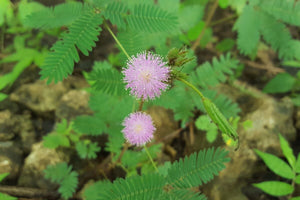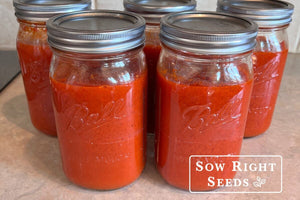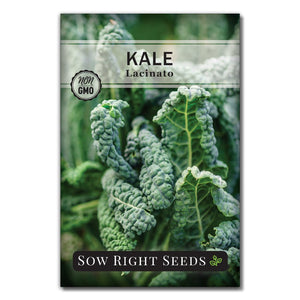Grow More Leafy Greens: Indoor + Outdoor + Hydroponic Growing Strategies
Leafy greensGreen leafy vegetables are easy to grow, and they are much tastier when freshly picked and grown at home. Leafy greens include kale, spinach, lettuce, bok choy, tatsoi, and more. These vegetables are adaptable and can be grown outdoors in containers or in the ground. They can also be grown indoors with hydroponics or soil. This flexibility makes them the perfect crop for the novice gardener who wants to grow tasty, nutritious veggies.

Ways to Grow Leafy Greens
Lettuce is the first vegetable we recommend to all beginner gardeners. It is an especially forgiving crop that can be harvested at the baby stage or allowed to fully mature.
Leaf lettuces can be harvested throughout the growing season or planted in succession to maintain a constant supply of fresh, delicious greens on the table.
Kale and spinach grow similarly to leaf lettuce and also adaptable to growing in a variety of ways.
Let’s look at some of the different ways you can choose to grow your greens.

Growing Indoors Vs. Growing Outdoors
Indoor growing and outdoor growing each have their own pros and cons. Which option you choose may depend on your location, growing season, and personal preferences.
Any indoor growing can also be considered container gardening. But indoor growing can be in a hydroponic system or in a container of soil.
Outdoor Leafy Greens
Outdoor gardening is generally the first option gardeners consider. For those who have the space, it's a great place to start growing leafy greens such as spinach, and kale.
- Outdoor plants planted in a sunny spot won’t need any extra light supplementation.
- You won’t need as much equipment to get started, and you probably will have a bit more space to grow.
- Plants that are planted directly in the ground tend to need a bit less maintenance.
- However, outdoor leafy greens are more subject to the elements and weather since they’re not in a climate-controlled environment.
- Leafy greens can become bitter or bolt early if the weather is unusually hot.
Outdoor gardening is a good choice for head lettuce varieties, collards, and cabbages. These types of green leafies require more room to fully develop and can be a bit more difficult to tackle indoors.
Growing Leafy Greens Indoors
Indoor gardening is a good option for those who don’t have access to a yard or much space outside. The benefits include year-round lettuces, protection from disease, sunburn, early bolting, and pests. They’re also right there and ready for harvest whenever you want a homegrown salad. The drawbacks include needing a little more monitoring, but since the plants are indoors, it’s easier to care for them. You also need a good space for the plants and some more equipment to get started, but the tradeoffs are worth it for many gardeners.
Leaf lettuces are especially good choices that can be grown in containers without a lot of setup.
- Choose a safe space away from drafts or heat sources, and make sure your pets can’t get to your seedlings.
- A very sunny south-facing window that ticks all of those boxes would be a great option.
- If you don’t have any place that fits the bill, you’ll also probably need to get some artificial lights to supplement.

Growing Hydroponically Vs. Growing in Soil
Hydroponic gardening is an option many gardeners choose for leafy greens. It’s simply growing crops in water rather than soil.
- There are many reasons people choose hydroponics for their leafy greens.
- Hydroponically grown leafy greens require a specialized nutrient mix to thrive.
- Hydroponics grow much faster - 30%-50%! That allows the home gardener to fit in more plantings faster and allows you to learn quickly.
- Hydroponics also has the advantage of being in a controlled environment that is relatively free of pests, weeds, and diseases.
- Hydroponics can be grown vertically for those who are short on space. If you only have a small area to grow in, a small vertical farm can provide a lot more veggies per square foot.
- Since these plants don't have to establish deep root systems to search for water and nutrients, hydroponic plants can be planted much more densely.
We've tried a few different hydroponic systems, and the startup costs are significantly higher than planting seeds in an outdoor garden.
There is also a new learning curve to figuring out the best setup and making sure you monitor the nutrients.
For those who want the freshness of homegrown leafy greens in the middle of winter, it can be well worth the effort and cost.
A small tabletop hydroponic system works well for small leafy greens that are harvested often. We like it for herbs and small leaf lettuces.
The larger tower-type hydroponic system allowed us to grow bigger leafy greens like tatsoi and kale.
An important thing to note is that hydroponic systems rely on mineral fertilizers and, in some situations, cannot be truly certified organic if that is your goal. And although they can produce quick yields, hydroponic plants tend to be more delicate and are less resilient than plants grown in soil.
The best thing is that with a packet of seeds, you have the freedom to grow in the way that best suits your circumstances.
If you have the desire to grow your own food, there's a way to make it happen.

Explore What Works for You
If what you’ve tried in the past isn’t working for you, don’t be afraid to experiment with something new. What worked for you in a different location or season might not be the right choice for now.
Try some of these different options, and you might find that you enjoy having a mix of indoor, outdoor, soil-grown, and hydroponically grown leafy greens.
Ultimately, it all comes down to your situation and individual goals. Whatever method you choose to garden, leafy greens are a great bet for year-round vegetables.
Stay open and curious, and most of all, enjoy gardening!









Leave a comment